Chebureki: Basic Information
Pronunciation
Alternative Name(s)
Dish Type
Course
Mealtime
Popular Variations
Chebureki: Origin and Region
Origin
Continent’s Region
Country’s Region
Associated Region
Chebureki: Ingredients and Preparation
Main Ingredients
Main Cooking Method
Preparation Process
Chebureki: A Deep Dive
Cultural Significance
Taste
Texture
Aroma
Color
Serving Style
Serving Temperature
Accompaniment
Occasions
Seasons
Special Diets
Calories
Popularity
Popular Similar Dishes
- Samosa
- Empanada
- Pierogi
Popular Dining Area
Chebureki is a type of deep-fried turnover with filling created by the Crimean Tatars people with a crispy texture. In Russia, this turnover is known as a meat pie, while the Crimean Tatar cuisine sees chebureki as a national specialty.
Typically, the traditional fried turnover features a crescent shape made by folding a round piece of dough over the filling. Furthermore, chebureki makes for a popular snack or street food item wherever it’s present, with Turkey having Çibörek, another name for the dish in Eskişehir.
Plus, the dough consists of dough, water, oil, and salt that is not sticky. The filling for chebureki often prioritizes ground lamb or beef thinly applied to the inner of the dough to ensure it will fully cook once the dough turns golden.
With all the features of chebureki in the palm of your hand, here are more things to know about the ways to make this meat pie and its pros and cons. Additionally, you should look deeper at how chebureki compares with piroshki, pierogi, and empanada.
Plus, there are more interesting inquiries about chebureki for you to find out, as well as dishes that are like this meat pie.
Key Points
Chebureki Images
How Is Chebureki Enjoyed Different Places in the World?
Chebureki makes its way to many regions around the world, thus explaining why many countries adopt this pastry as a part of the population’s diet:
| Country/Region | Chebureki Characteristics |
|---|---|
| Caucasus | Popular, especially in Turkic or Muslim areas, typically filled with spiced meat. |
| Russia | Well-known snack, available in street food settings with various fillings, including traditional spiced meat. |
| Greece | Found in areas with Eastern European or Middle Eastern immigrant populations. |
| Lithuania | A popular street snack in the country |
| Latvia | Enjoyed by locals as a snack and street food option |
| Estonia | Influenced by the Russian availability of chebureki |
| Romania | Available in areas with Russian or Ukrainian influence. |
| Turkey | Known as “çibörek,” especially popular in regions with Crimean Tatar heritage. |
| Ukraine | Popular street food, often filled with minced meat and onions, deep-fried to a crispy finish. |
| Uzbekistan | Locals adopt chebureki as a street food with various fillings, |
| Azerbaijan | Enjoyed in regions with Turkic influences, often featuring spiced lamb or beef. |
| Tajikistan | Found influenced by Russian and Central Asian cuisines. |
After learning about the versions of chebureki in many countries, let me guide you through the basic process to materialize this favorite treat.
How Chebureki Is Made?
Chebureki is easily recreated at home using easy-to-find ingredients like ground meat, onion, salt, oil, water, flour, and black pepper. Without further ado, let me run you through steps to materialize your own meat pie.
- Step 1: Mix the flour, oil, salt, and water to form the dough. Keep kneading until you get a soft and not sticky mixture.
- Step 2: Prepare the filling by mixing ground meat (beef or lamb) with ground onion, salt, and pepper.
- Step 3: Divide the dough into small balls and flatten them into a thin circle.
- Step 4: Spread the meat filling on one-half of the flattened piece of dough and fold it.
- Step 5: Seal the dough by pressing the edges of the dough and shaping it into a half-moon.
- Step 6: Fry until the outer dough becomes golden brown on both sides, drain excess oil, and serve chebureki hot with your choice of sauce.
When your chebureki is ready for consumption, I have a few ups and downs of consuming this meat pie to keep your curiosity going while digging through your creation.
Pros And Cons of Eating Chebureki
Don’t miss these features relating to chebureki consumption if you’re health-conscious and always want to be aware of the food you eat:
Pros
Cons
While Chebureki offers a unique culinary experience with its own set of advantages and drawbacks, another dish that often sparks comparison with chebureki is piroshki from Eastern Europe.
What Are The Differences Between Chebureki and Piroshki?
When it comes to chebureki and piroshki, both are quite similar because of their golden appearances. However, there are many features for people to distinguish these two pastry creations:
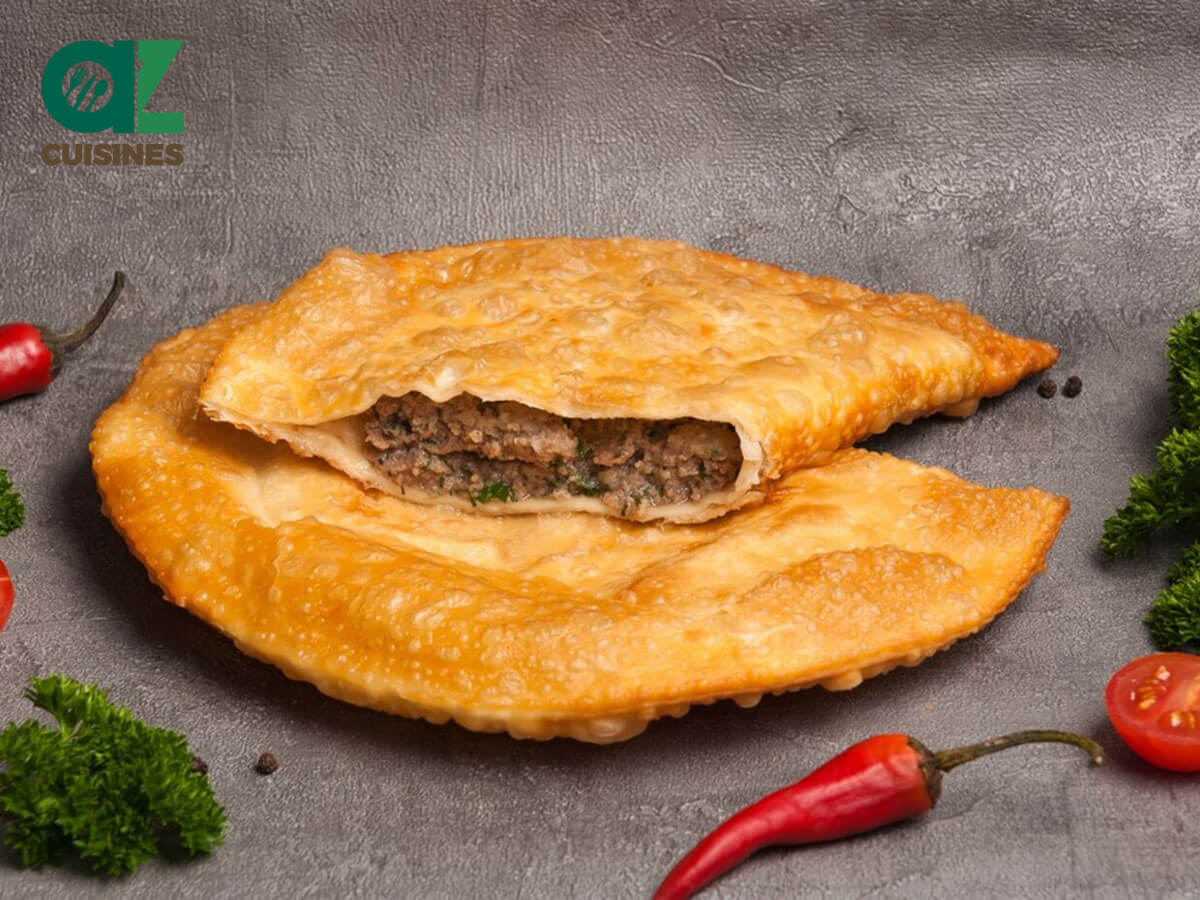
Chebureki
Origin: Crimean Tatar people
Cooking Method: Deep-frying
Filling: Ground meat (lamb or beef) and onions
Dough: Thin and crispy when fried
Shape: Half-moon or crescent shape
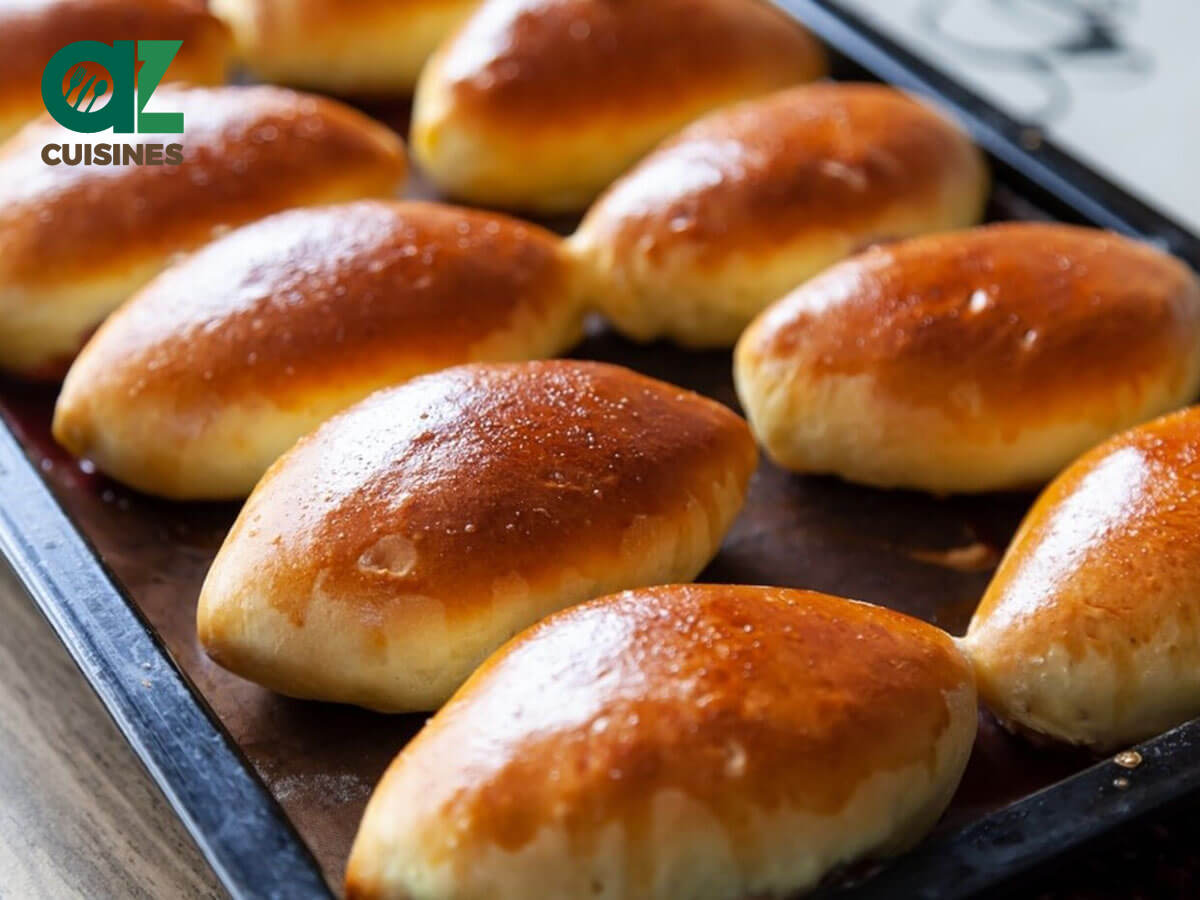
Piroshki
Origin: Russian, Ukraine
Cooking Method: Baking or frying
Filling: Ground meat, vegetables, eggs, rice, or sweet
Dough: Soft (baked) or light (fried)
Shape: Varies (can have boat, crescent, triangle, round, or oval shape)
Aside from piroshki, pierogi is another contender that people often compare with chebureki, especially in the European area.
How to Distinguish Between Chebureki and Pierogi?
Chebureki and pierogi are surprisingly easy to distinguish, with 6 features to notice:

Chebureki
Origin: Crimean Tatar people
Type: Savory pastry
Filling: Ground meat (lamb or beef) and onions
Dough: Thin and crispy
Shape: Half-moon or crescent shape
Cooking Method: Deep-frying
Popularity: In Crimean Tatar and various post-Soviet countries
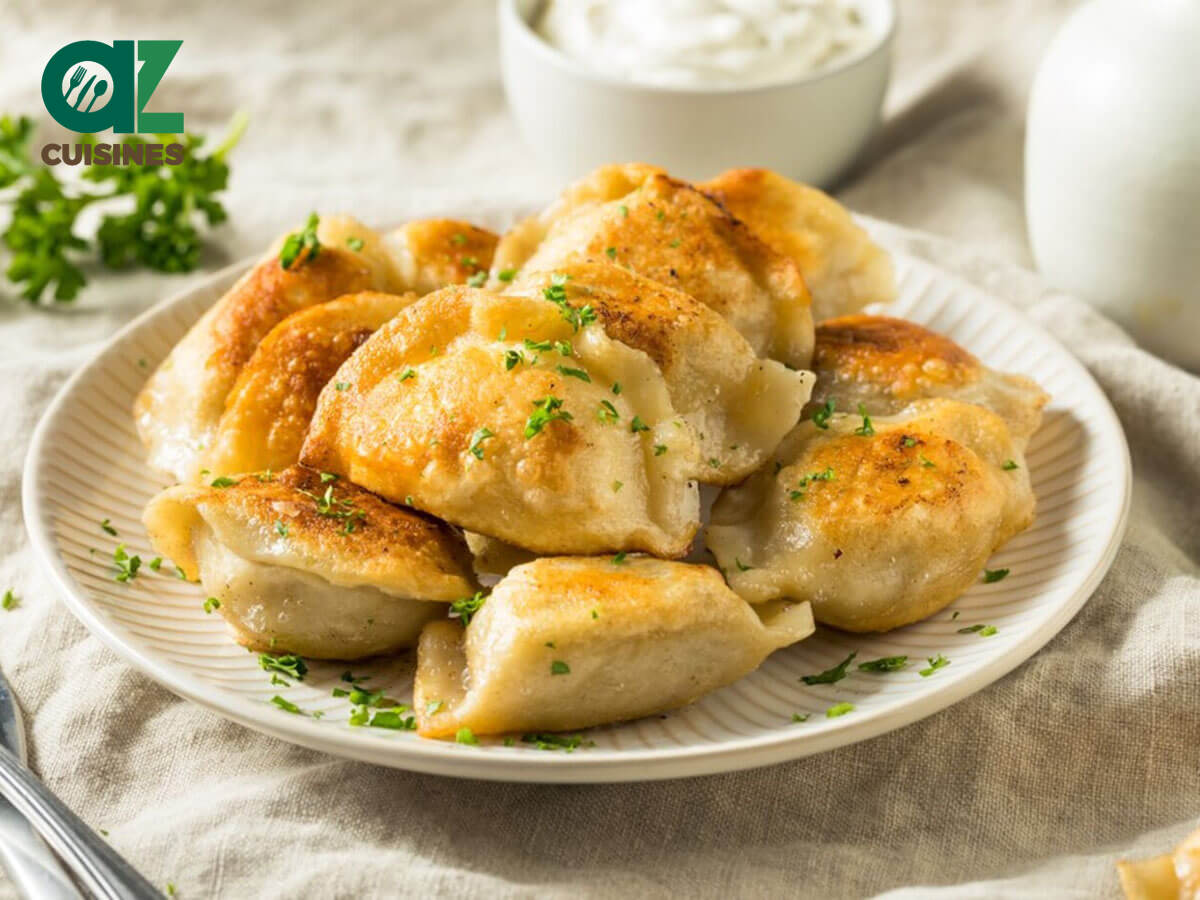
Pierogi
Origin: Asia and Europe
Type: Dumplings
Filling: Including meat, cheese, vegetables, and sweet fillings like fruit or jam
Dough: Soft (boiled) or crispy (fried)
Shape: Half-moon or round, various shapes
Cooking Method: Boiling, pan-frying or baking
Popularity: In Polish, Ukrainian, and other Slavic cuisines
With some of the food representatives of Europe out of the way, there’s still one more specialty from North America which is empanada for you to distinguish from chebureki.
How Does Chebureki Compare to Empanada?
Let me show you how chebureki is easily recognizable when placed on the same table as empanada through a few noticeable features:

Chebureki
Origin: Crimean Tatar people
Type: Savory pastry
Filling: Ground meat (lamb or beef) and onions
Dough: Thin and crispy
Shape: Half-moon or crescent
Cooking Method: Deep-frying
Popularity: Popular in Crimean Tatar and various post-Soviet countries
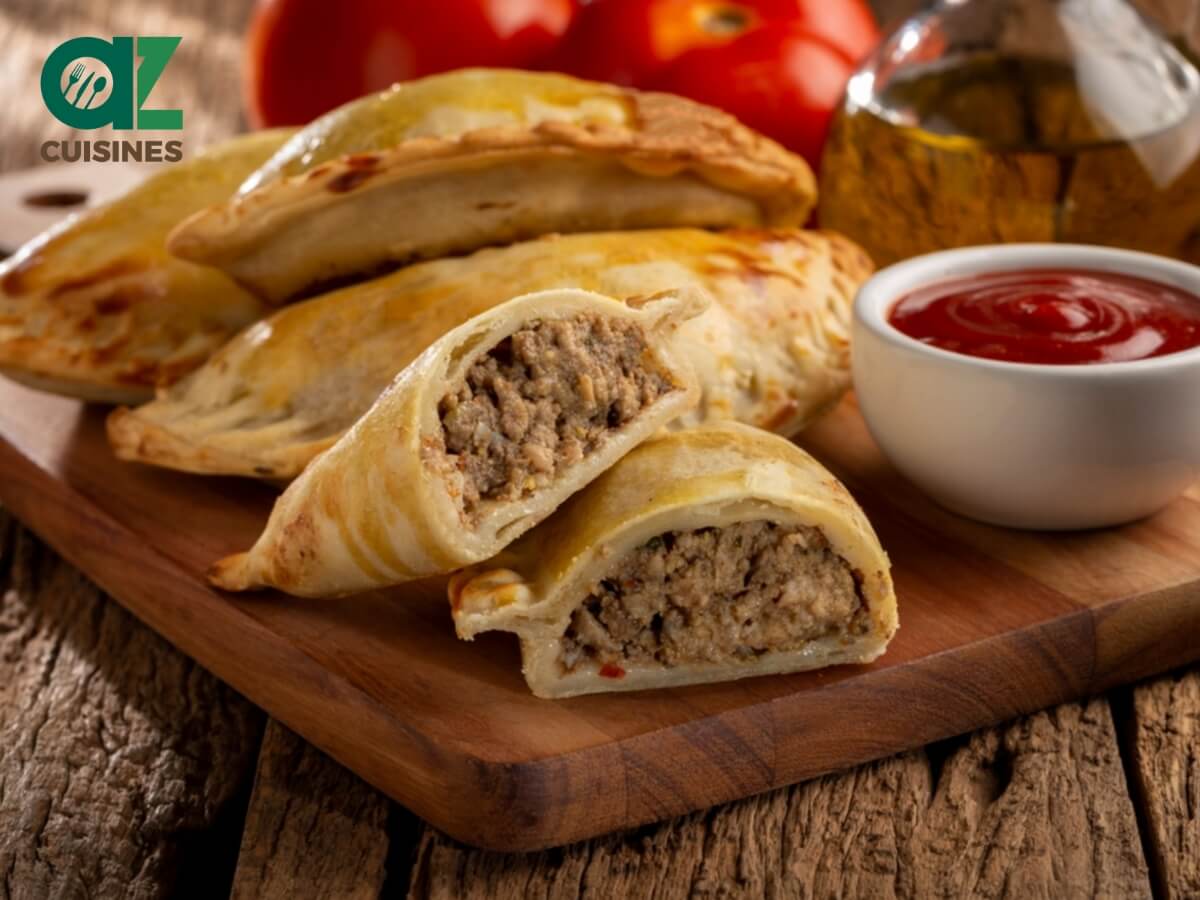
Empanada
Origin: Latin American and Spanish cuisine
Type: Pastry
Filling: Meat, cheese, vegetables, and sometimes sweet fillings
Dough: Thick, flaky, or bread-like
Shape: Half-moon or round
Cooking Method: Baking or frying
Popularity: Widely consumed across Latin America and Spain, with regional variations
Once you go through the differences between chebureki and empanada, I have more frequent inquiries for you to uncover.


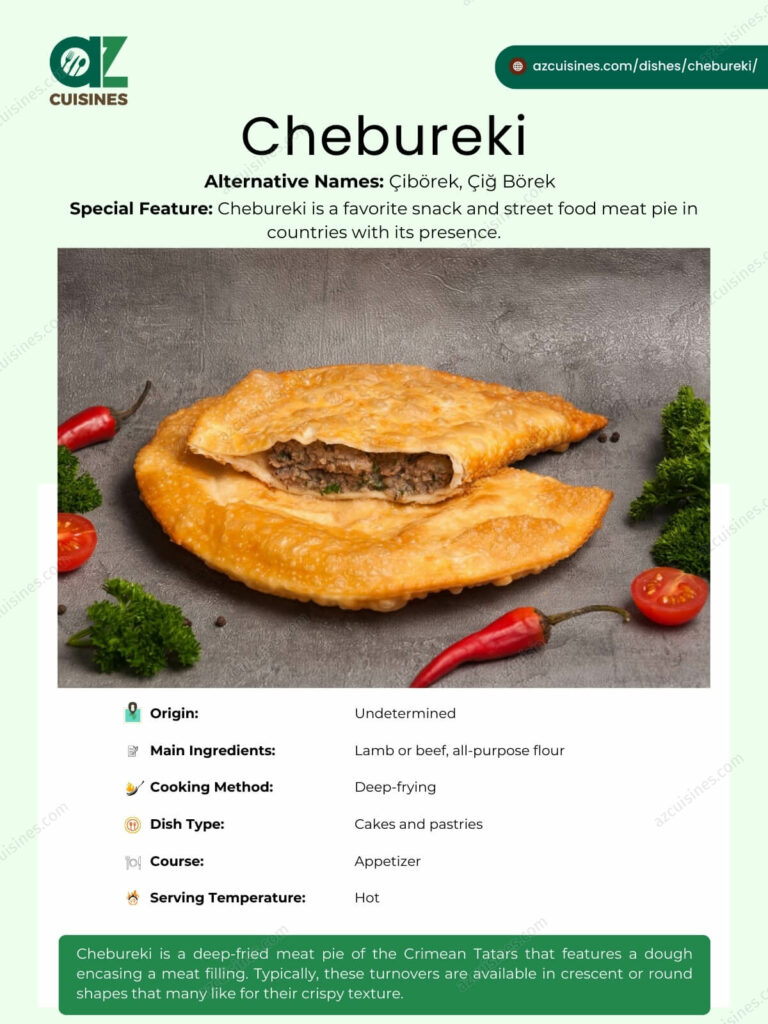
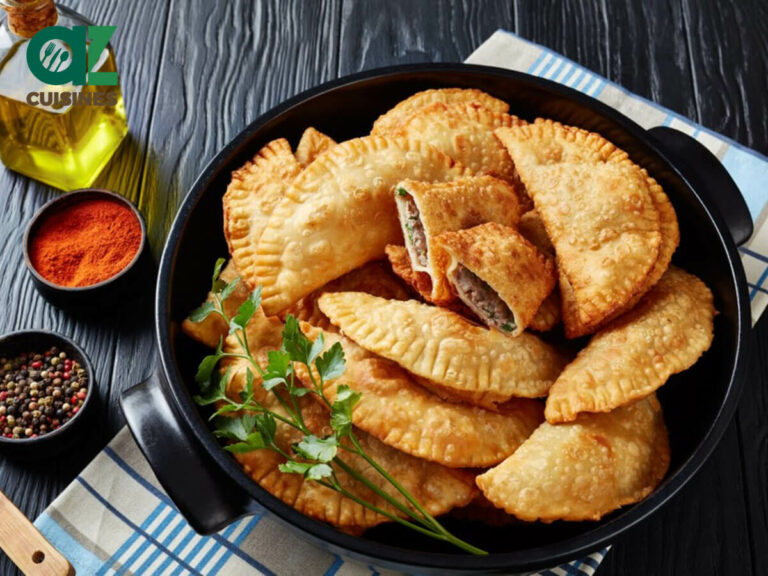
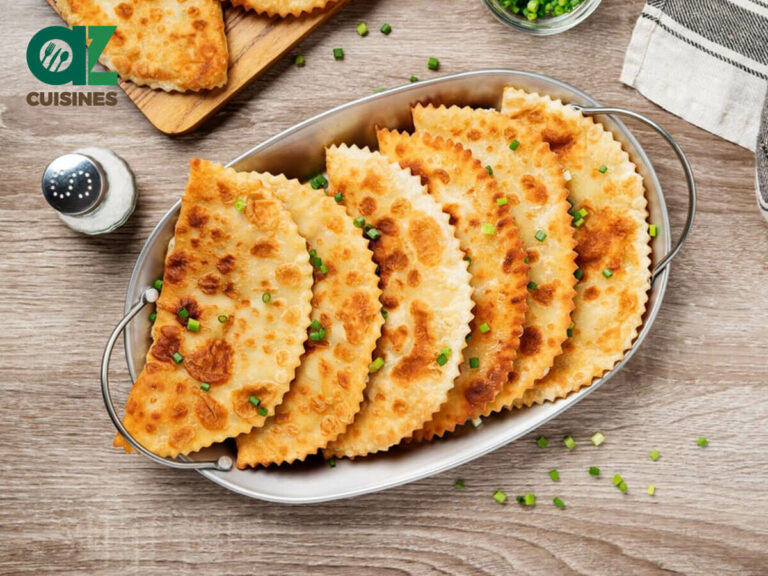
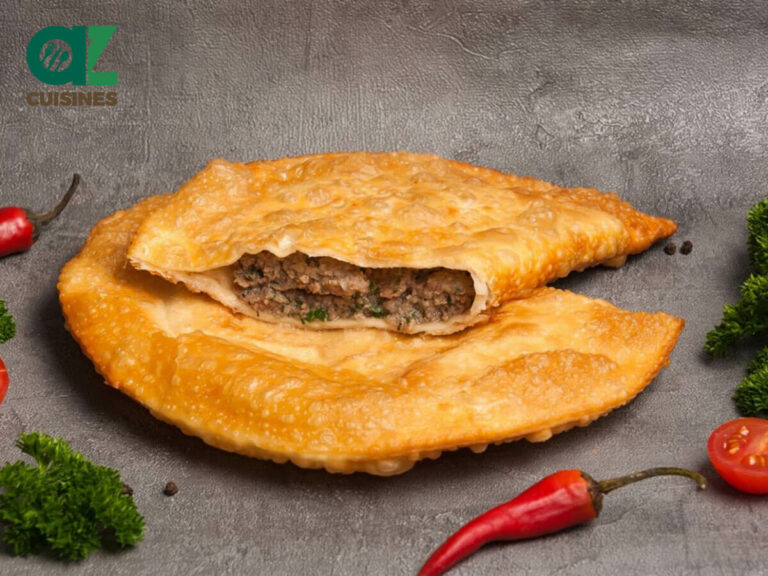
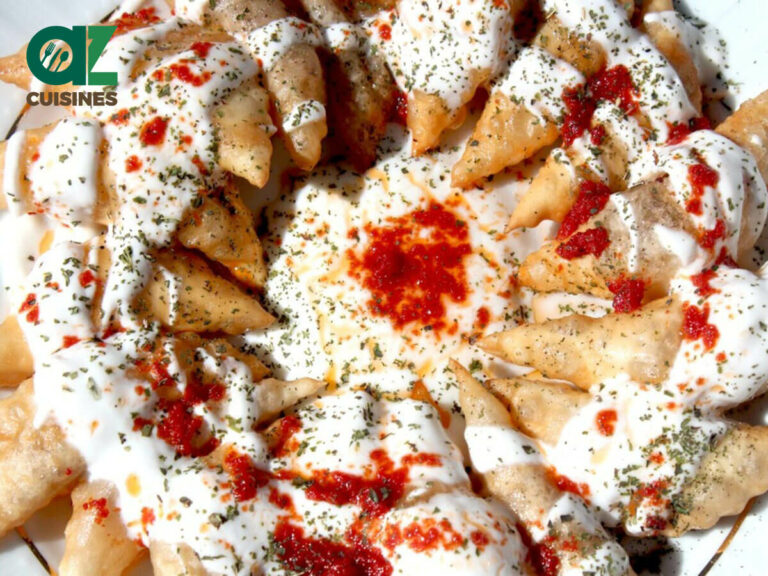

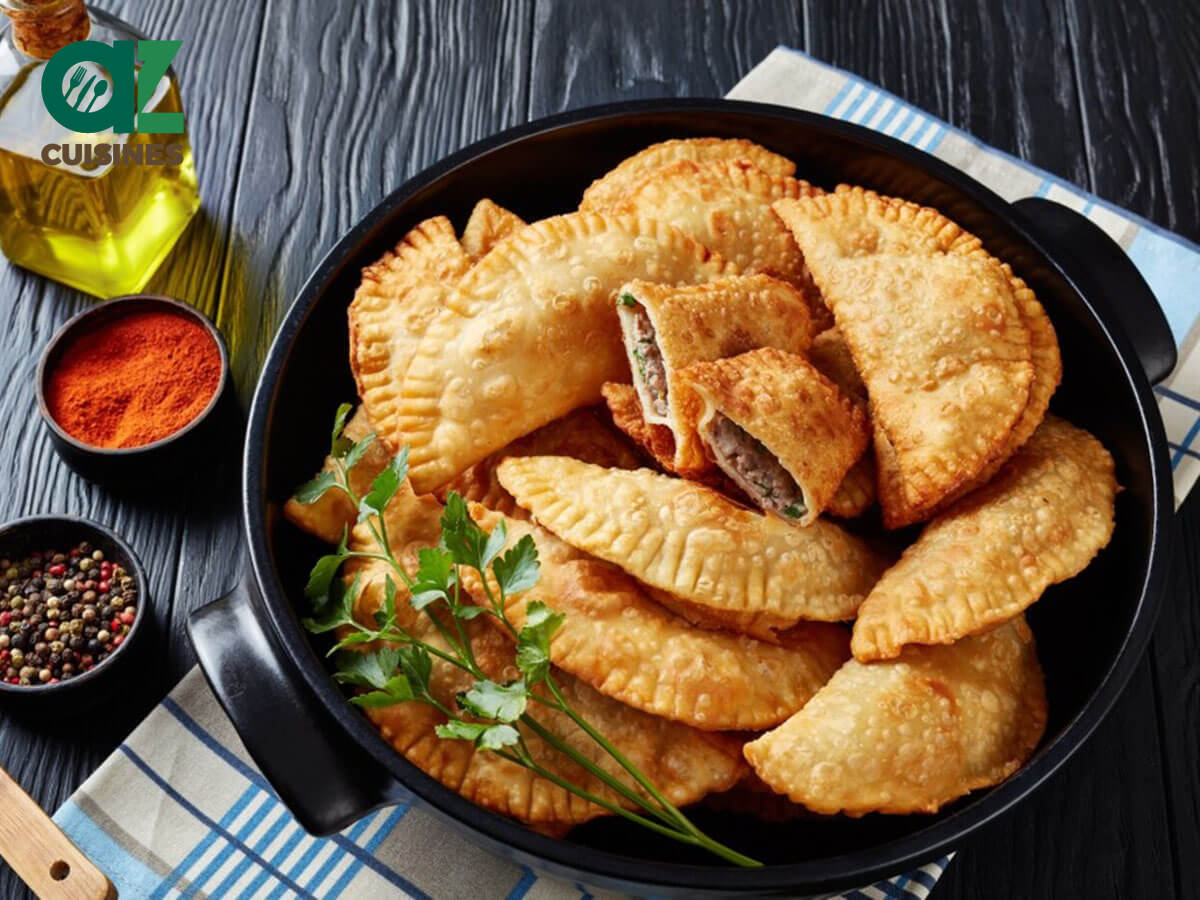
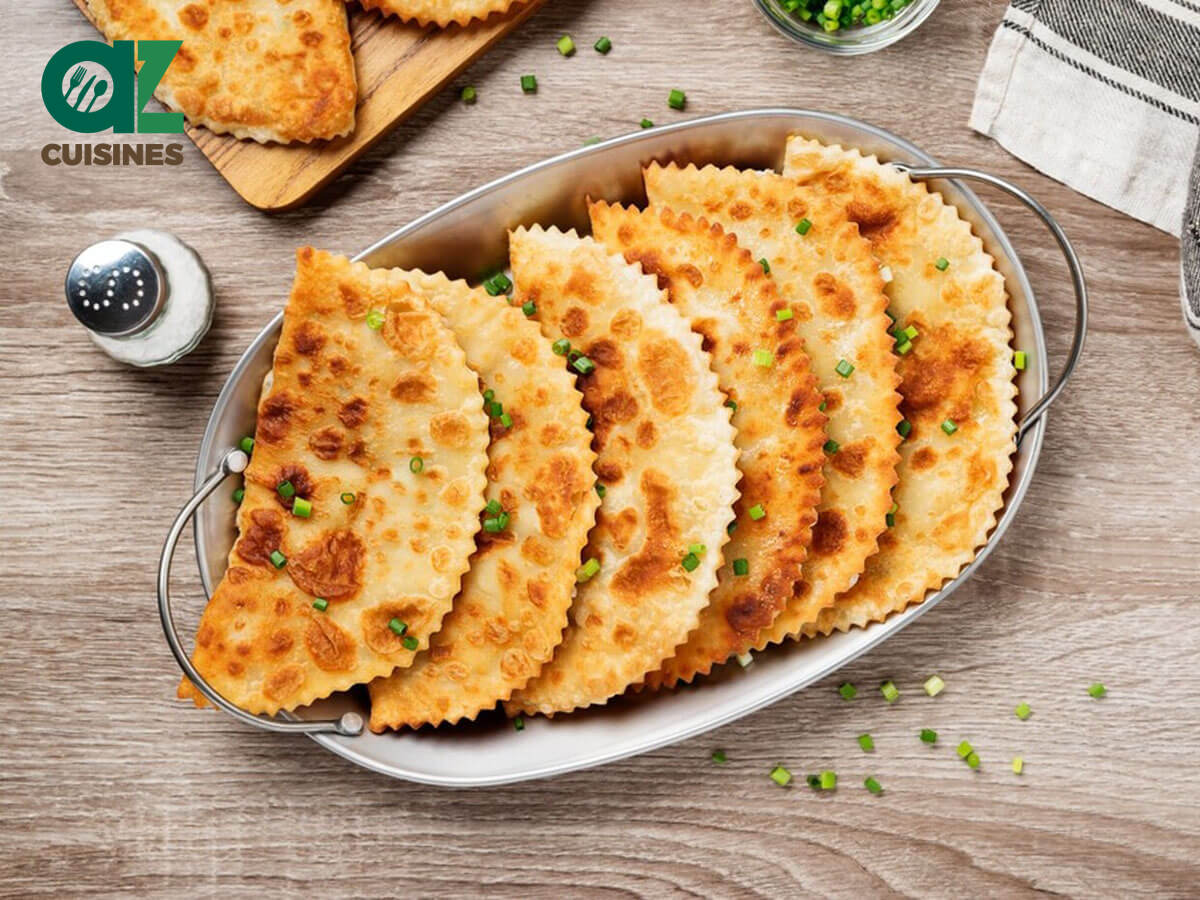

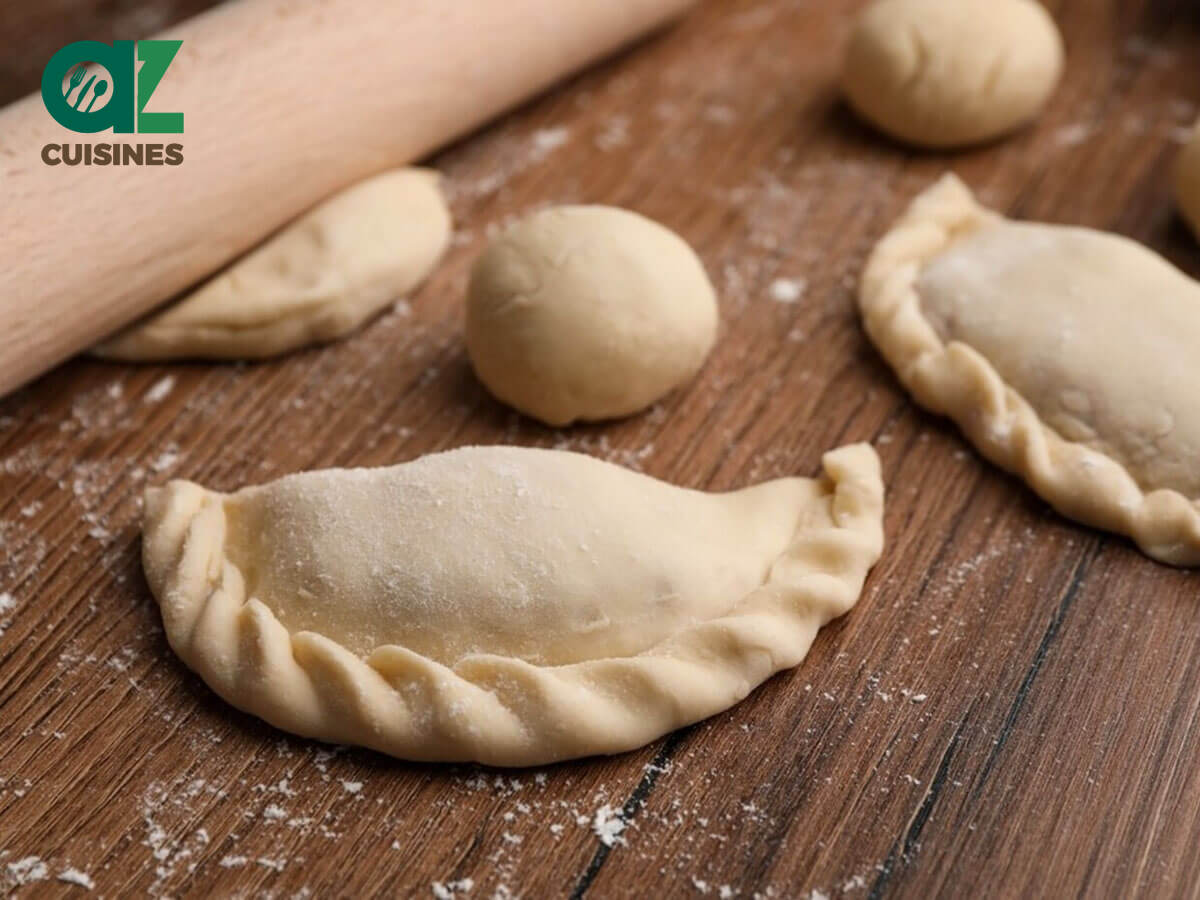

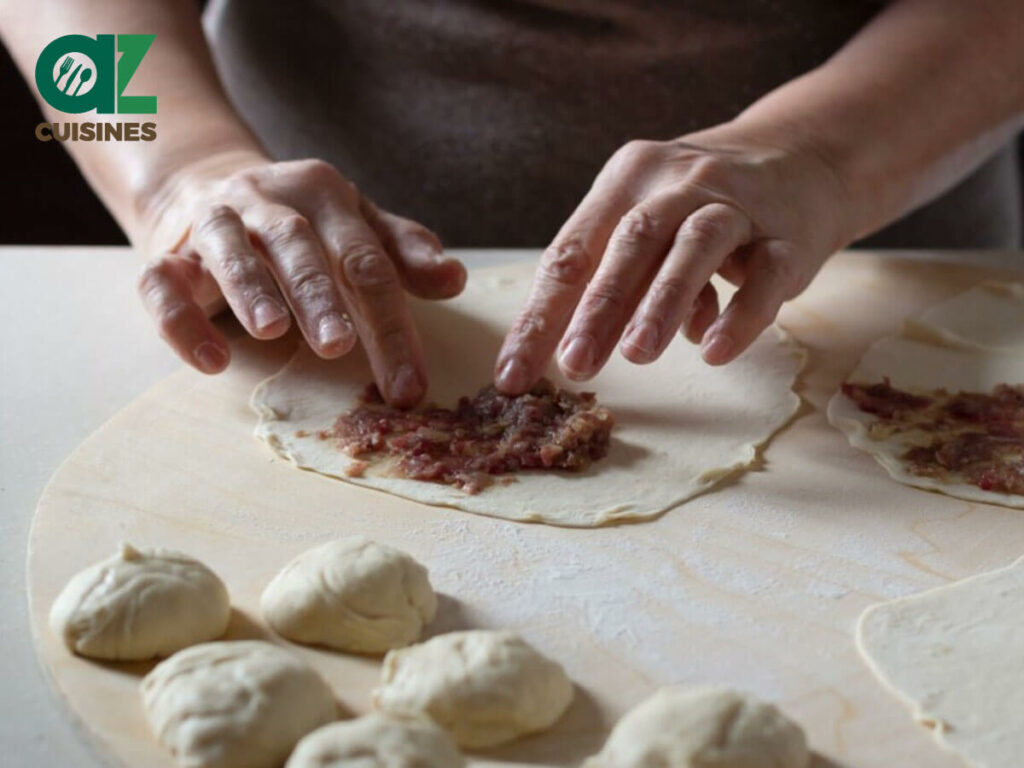
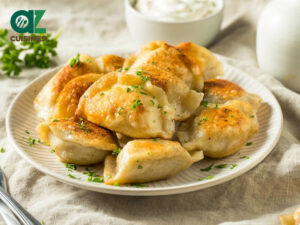


Adam Sam
Senior Food and Drink Editor
Expertise
Food Writer & Recipe Developer, Recipe Tester, Bartender, Cooking-video Maker, Editor In Chief
Education
Adam Sam, an experienced food writer and recipe developer, is passionate about blending diverse culinary traditions, national dishes, and innovative beverages, showcasing his proficiency in both traditional and modern recipe testing.
As the Editor-in-Chief, he elevates culinary content from street food to fine dining, focusing on Western cuisine and types of drinks at azcuisines.com, and is professional in creating engaging cooking videos that simplify complex dishes and ingredients.
His passion for food is evident in his writing, where he uniquely merges various cultures, traditions, and contemporary trends, skillfully combining classic recipes with modern cooking methods.